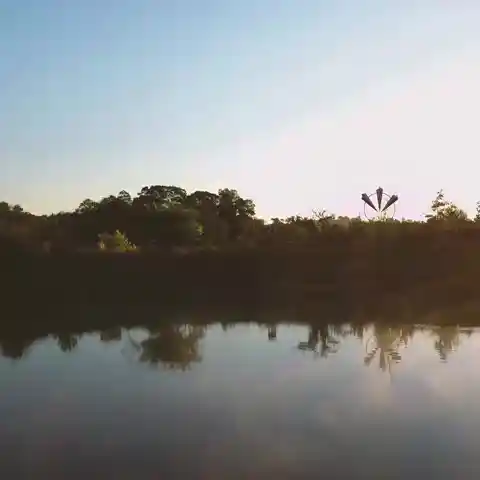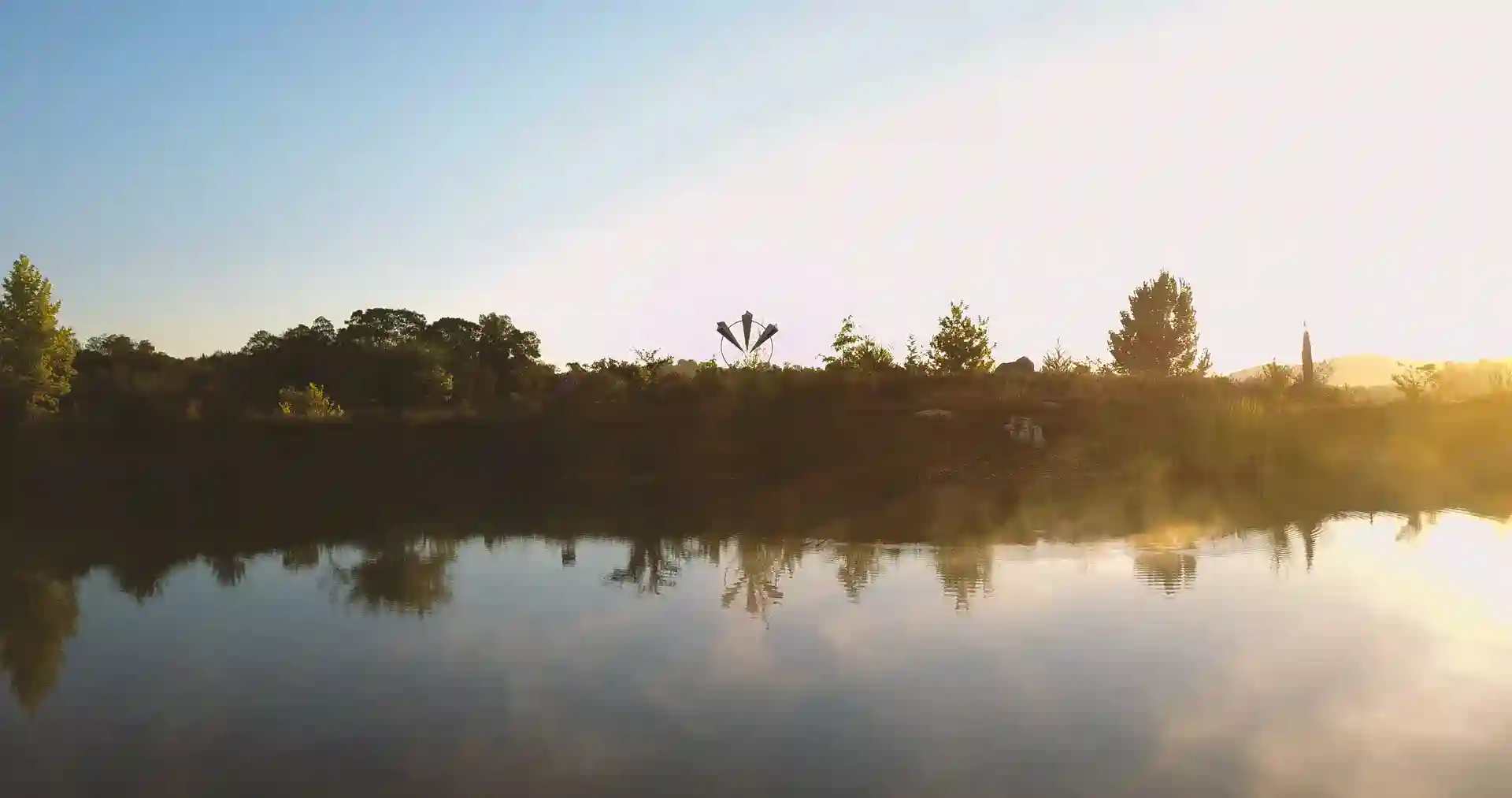Terra Deva
Terra Deva is our department for spiritual ecology, mentored by co-founder Sabine Lichtenfels, where we research interspecies communication, trustful contact and cooperation with plants, animals and all beings, both visible and invisible. We learn how to heal our relationship with them and how we can restore landscapes and produce food in collaboration. We want to create a culture integrating all of life, where there is no hostility, and restore the sacred alliance of all beings.
“We’re not just talking about things and beings, but also with them, in cooperation with nature. This is not just a slogan, but a real source of inexhaustible knowledge, friendship and the soul quality of life.”
SABINE LICHTENFELS
Terra Deva is part of our emerging Marisis landscape park that includes the Stone Circle, pilgrimage paths and other spiritual power places. The team works closely with the larger ecology team, as part of our deep ecology work, cooperating on landscape design and gardening work.
Vision
We’ve been experimenting with how to consciously collaborate with all beings since the beginning of the project in response to the unimaginably violent ways in which people treat them worldwide. We’ve also learned from and been inspired by:
- Findhorn Foundation, spiritual community and eco-village in Scotland, with extensive experience of communicating with “devas” (as documented in Dorothy Maclean’s book, “To Hear the Angels Sing”)
- Eike Braunroth (site in German), German “peace gardener” who works with the principle of “communication with nature.”
- Anna Breytenbach, South African animal communicator
- J. Allen Boone’s book, “Kinship with All Life”
In 2013, we created “Terra Deva” as a research area of 6-hectares to learn how to communicate with animals, plants and the unseen beings, by coming into resonance with each other. We speak with them rather than about them.
Cultivating terrain that was overgrown with rockrose and blackberries, we began working with pigs, chickens, bees, wildlife like wild boar, mongoose and many others, setting up and working with “power places” – special areas dedicated to ritual and prayer.
Our Research Questions Include:
- How can we get in touch with the soul of plants or animals?
- How can we restore harmony with domestic animals and livestock after millennia of exploitation?
- Can we influence the growth of plants by thoughts, music or other frequencies?
- How can we cooperate with natural beings in a Healing Biotope, to overcome separation and restore wholeness?
- What is a power place?
- Is it possible to eat fish, meat or dairy products in agreement with animals, as some Indigenous cultures do?
- How do we engage with animals that are usually considered “pests”?
- How can we communicate effectively and set boundaries without using force?
Results
- Before starting any construction, we communicate with the spirits of nature and ask for permission and messages, listening to the dream inherent in the landscape. This is an ethical principle in our community.
- We collaborate with all beings, even the ones considered “pests” like snails, slugs, worms, rats and wild boars. We acknowledge that their appearance is usually a message for us to change something and learn.
- We create “agreements” with the collective spirit of the being – known as “devas” – where we commit to respond and change, and ask them to respect our space. Our astonishing experience is that it works time and again, as long as our intention to collaborate is genuine. We’ve seen that while few people can pioneer in this field, eventually all members of the community must stick to this commitment for the cooperation to last.
- We’ve seen that species that, in other situations, would tend to massively reproduce, like rats for example, develop a balanced population when they’re part of a healthy biotope, i.e. when they’re accepted by and in cooperation with humans.
Key Learnings
- Every being has a soul we can communicate with.
- Animals are collaboration partners, not pests.
- We can’t dissolve imbalance in nature by exterminating other beings, but only through hearing their message.
- Animals and plants react with unreserved gratitude and friendliness when we humans get in contact without fear and aggression.
- They collaborate happily when we send clear messages.
- Cooperating with nature transforms the entire community.
- How we relate to animals always reflects how we relate to our own animal nature. When we accept the sensuality, perceptiveness and wild desires of the animal within us, we’ll relate in a new, loving way to all carnal beings.
Terra Deva in Pictures
Chickens
Our chickens are free to roam and scavenge during day and night. We are trying to establish a deep cooperation between wildlife and the chicken, so that the chickens are safe and still the wild animals can help us regulate the population of our chickens. One of our research questions is, “Will chickens that live in trust and cooperation voluntarily give their eggs and flesh to humans?” To find answers to many of our research questions we’re developing a deep contact to the collective consciousness of the chicken and the wild animals because true answers can only develop through contact.
Pigs
Our pigs are cooperation partners. They love to stir up wasteland with their snouts to clear scrub and plow the earth, and this useful work helps turn fallow areas into gardens. In the times of the goddess, they were symbols of wealth and lust, and so have been given a bad and “unclean” reputation during the patriarchal time. We acknowledge they are powerful and sacred animals.
Wild Boars
Wild boars roam through Tamera, as we allow them to use our land as a refuge. Through their presence in Tamera we have the opportunity to establish an intimate connection with a wild species. Due to the trust that arose in the last few years, they have changed their behavior from being nocturnal to diurnal. We found that we can protect our gardens without violence or fences by communicating and cooperating with them. The results of our research are being used in our ecology team, where we create agreements requesting they stay out of our agricultural areas. Through cooperating with the wild boars we want to show an alternative to the global extermination campaign these animals are presently subjected to.
Bees
We support the emerging bee sanctuary in Tamera. Using traditionally shaped hives, through cooperation experiments with the varroa mite, treatment of sick bees with herbs and leaving the honey to the bees for a while, we’re trying to understand the nature of the bees, and receive information that’s needed for their protection and cure.
Regional bee keeper team walks swarm to its new home in a top bar hive in our bee garden, April 2020:
Rats
When we communicate with the rats, we use different methods to outline the specific forms of cooperation we are asking for (for example, to not nest in kitchens or come to our homes), sometimes with amazing success. This kind of synchronicity between our ways of communicating and the rats’ behavior is the basis of our research. We’ve created places for mutual perception and communication inspired by the famous Rat Temple in Rajasthan. We’ve learned that we must let go of hostility and fear to be able to perceive the beauty and the message of rats. We’ve also learned that rat populations adjust to their habitat and find a natural balance when they have safe places to nest and are no longer fought and hated. The Terra Deva team has already been able to assist people in the region in learning how to treat rats in a nonviolent way.
Learning from Children
Many children experience animals and plants as partners that they can share their thoughts and feelings with. Through their connection with nature, they experience basic trust. Adults can learn a lot from children. Children regularly help the Terra Deva team in a playful way and in collaboration with our Children’s Place.
Power Places
All original cultures had power places in which people could recharge their energies, contemplate and communicate with the divine. Tamera uses power places for healing purposes, where meditation can uncover buried memories of our original peace wisdom. Power places often lie on geomantic energy lines or have some striking natural features, like a special tree or rock. The Terra Deva team is trying to emphasize these natural forces and bring out their special character with a sensitive design, for example a stone monument or sculpture.
Art
Terra Deva combines ecological and artistic design. Dieter Duhm: “Art comes from a deep connection with the world and creation. It comes from an inner willingness to let go of the old and open up to new experiences.”
Learn with Us
You can request guided tours of Terra Deva.
Join the “Ring of Power,” a weekly sunrise meditation for a growing spiritual-political network, which Sabine Lichtenfels accompanies and facilitates.
















